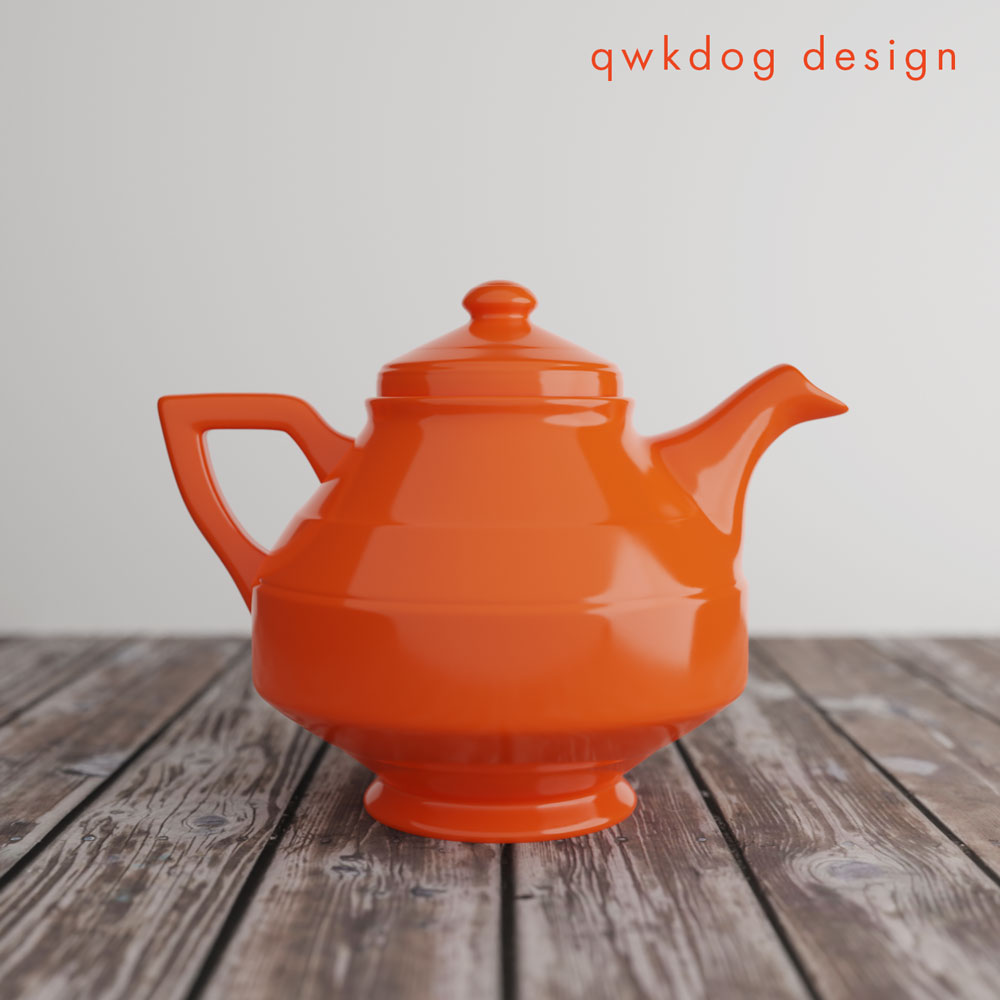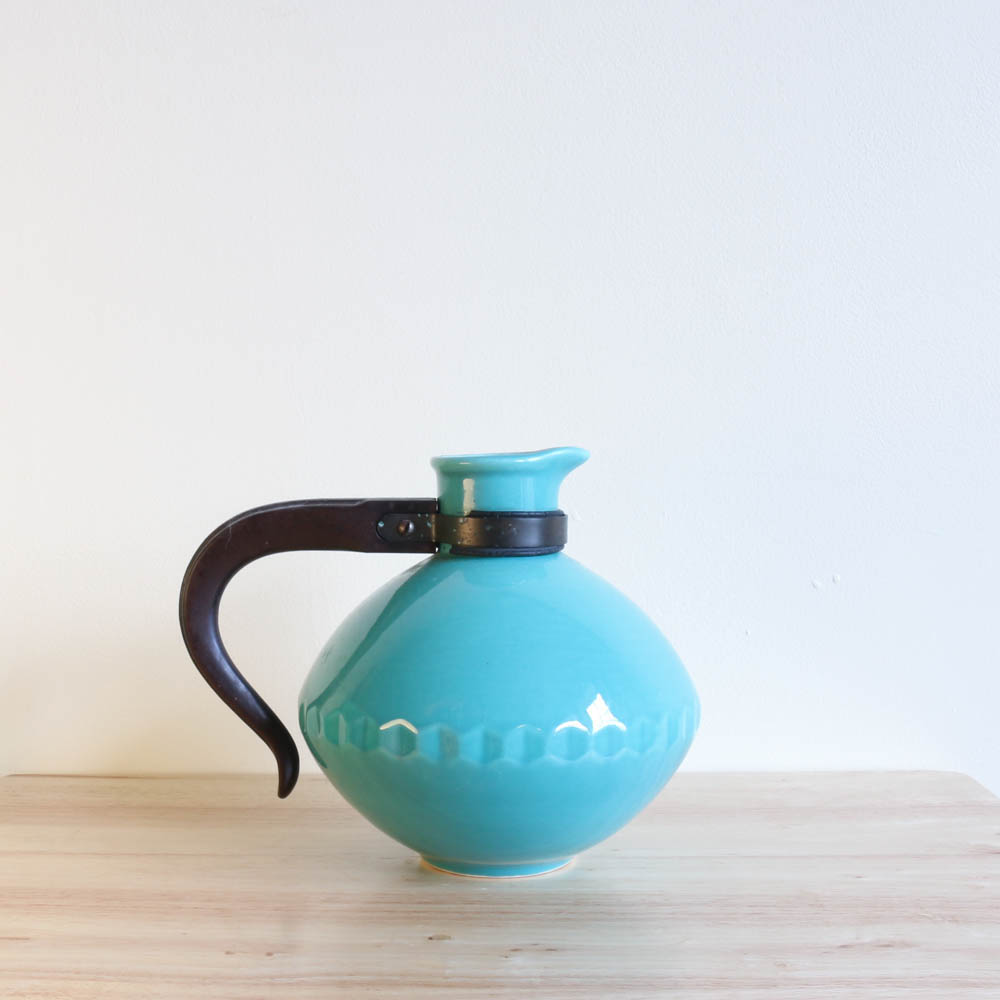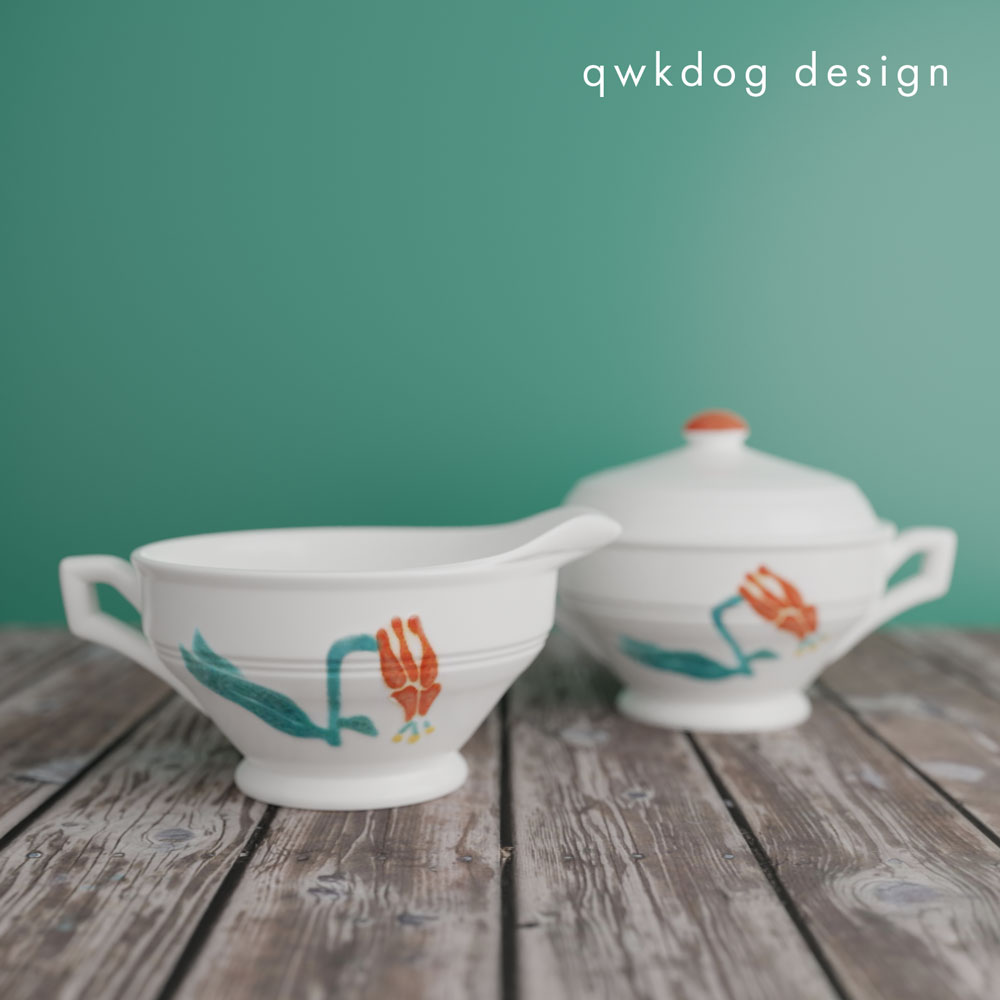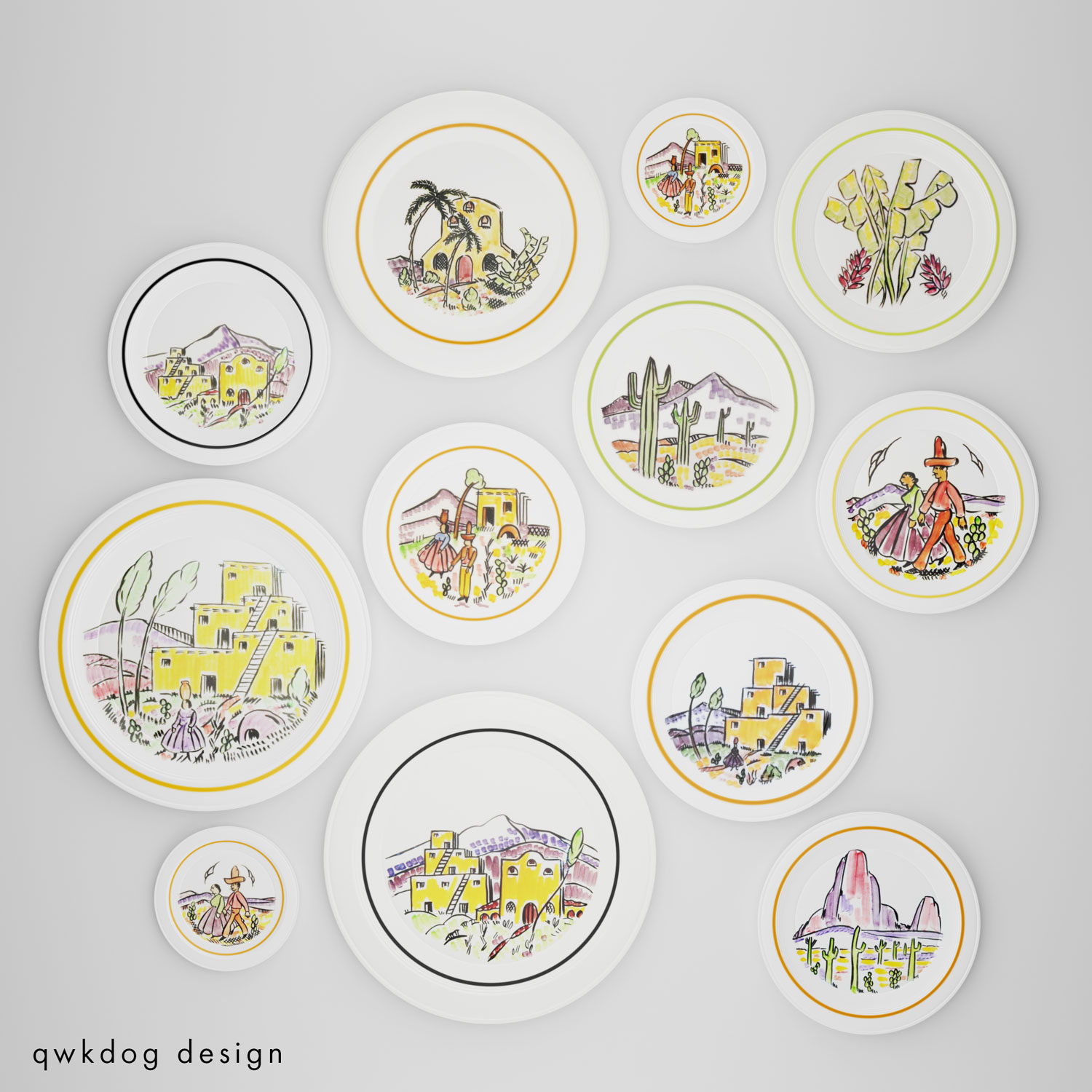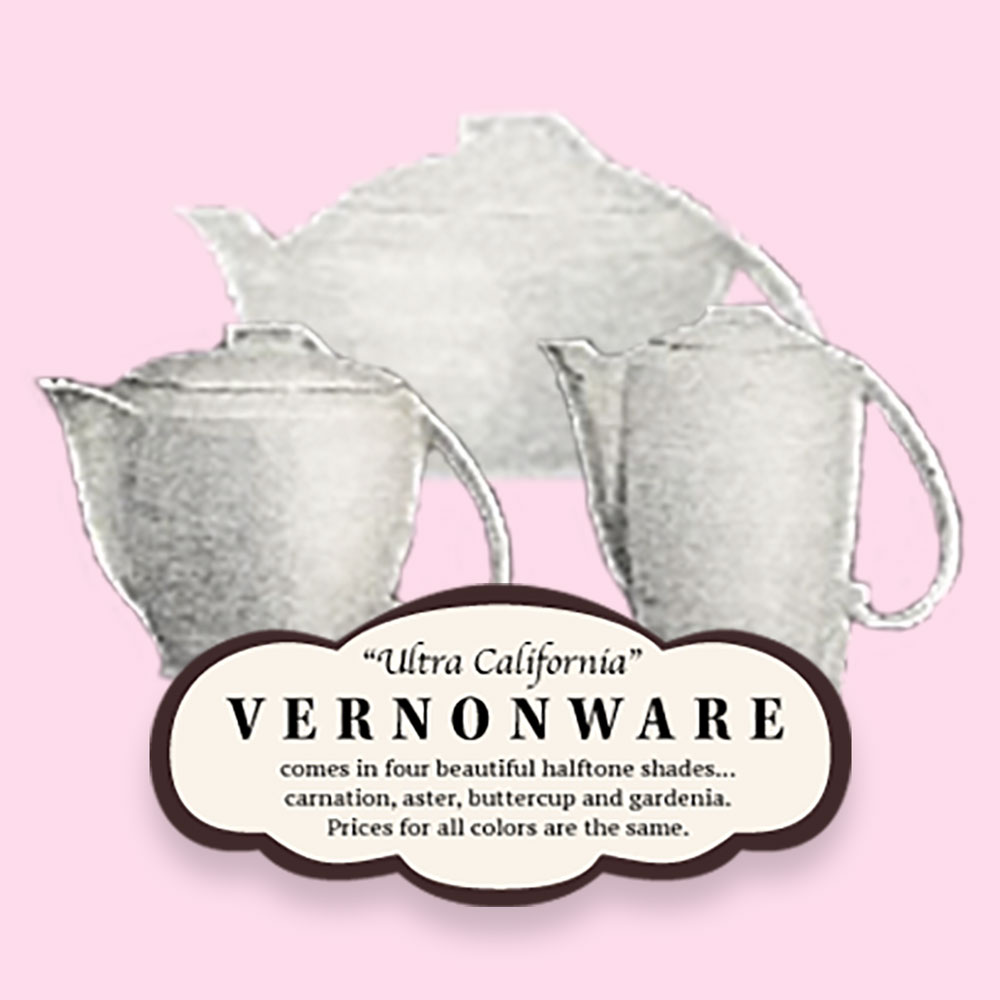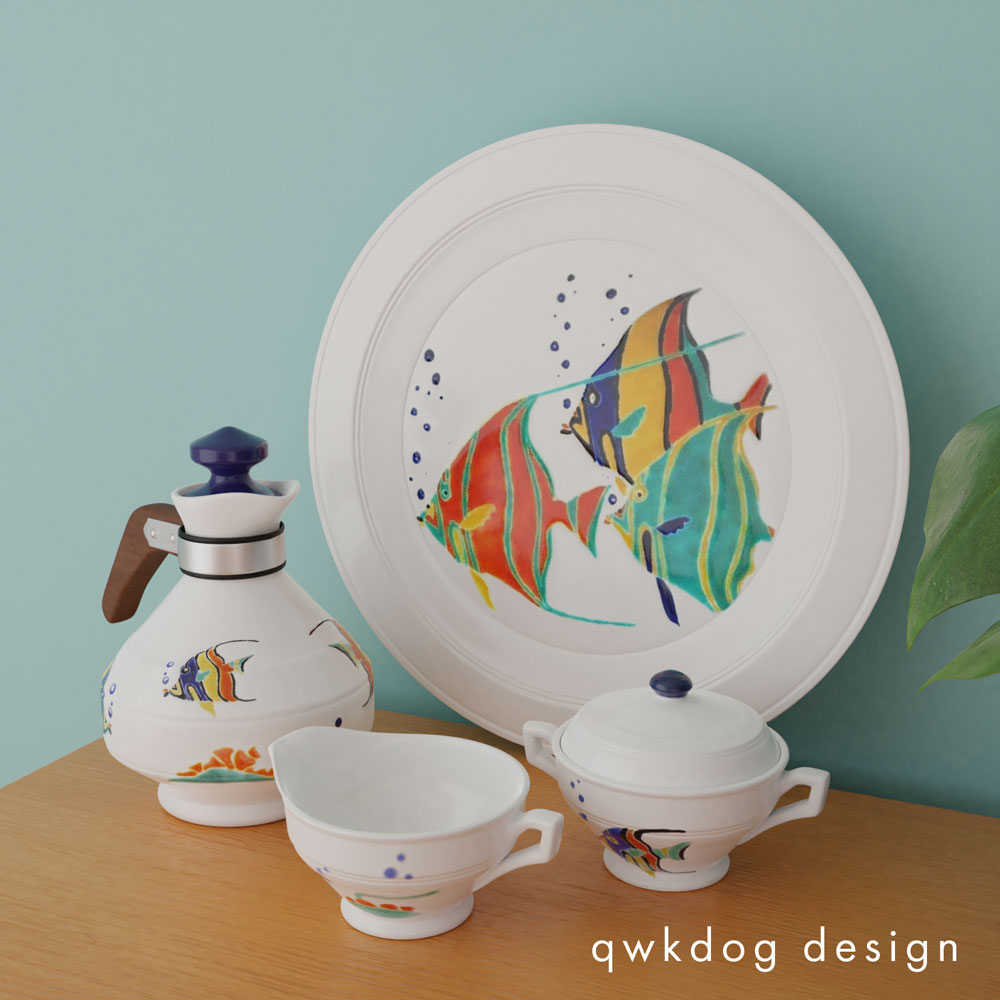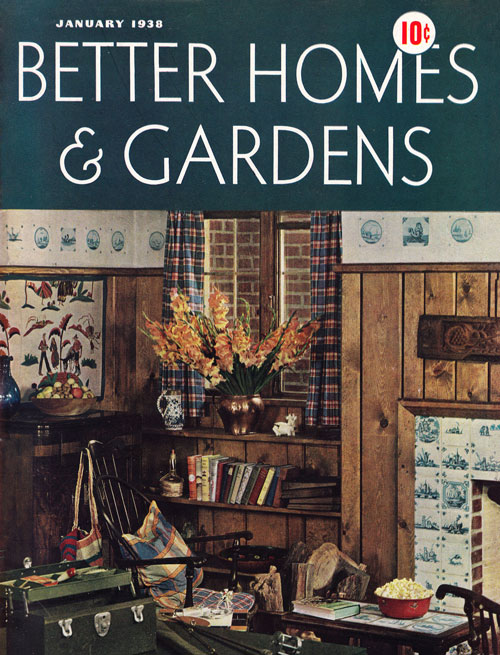From 1931 to 1958, Vernon Kilns produced a wide range of dinner- and artware. Through the company’s relatively short history, they were renowned for their high-quality production and design. Unlike many of their Southern California competitors, they distributed their ware nationally and collectors today can find Vernon Kilns in most areas of the United States.
The early years: Poxon China
Vernon Kilns began its existence as Poxon China, founded by George J.W. (Wade, of the Wade pottery family in England) Poxon in 1912 in Vernon, California, an industrial suburb of South Los Angeles. In their early days, Poxon produced ceramic tile and a limited amount of artware and vases, shifting production to earthen- and restaurant-ware around World War I. Fire being a common hazard of pottery companies, the facility partially burned down in 1927. Struggling to rebuild through the early years of the Great Depression, the Poxon family sold the company to Faye G. Bennison in 1931 who renamed the company to Vernon Kilns.
Bennison continued to produce the “new” Vernon pottery on existing Poxon blanks. Poxon china is easily recognizable by its frilly embossed and scalloped rims, and use of fired-on decals for decoration popular in the 1920s. Vernon sold this early ware at inexpensive five-and-ten stores and as giveaway premium-ware for movie theaters and other stores.
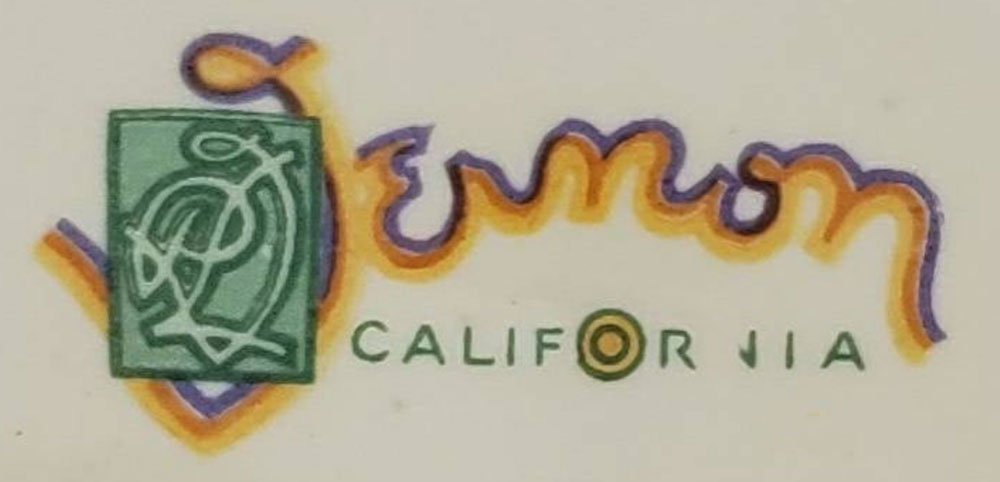
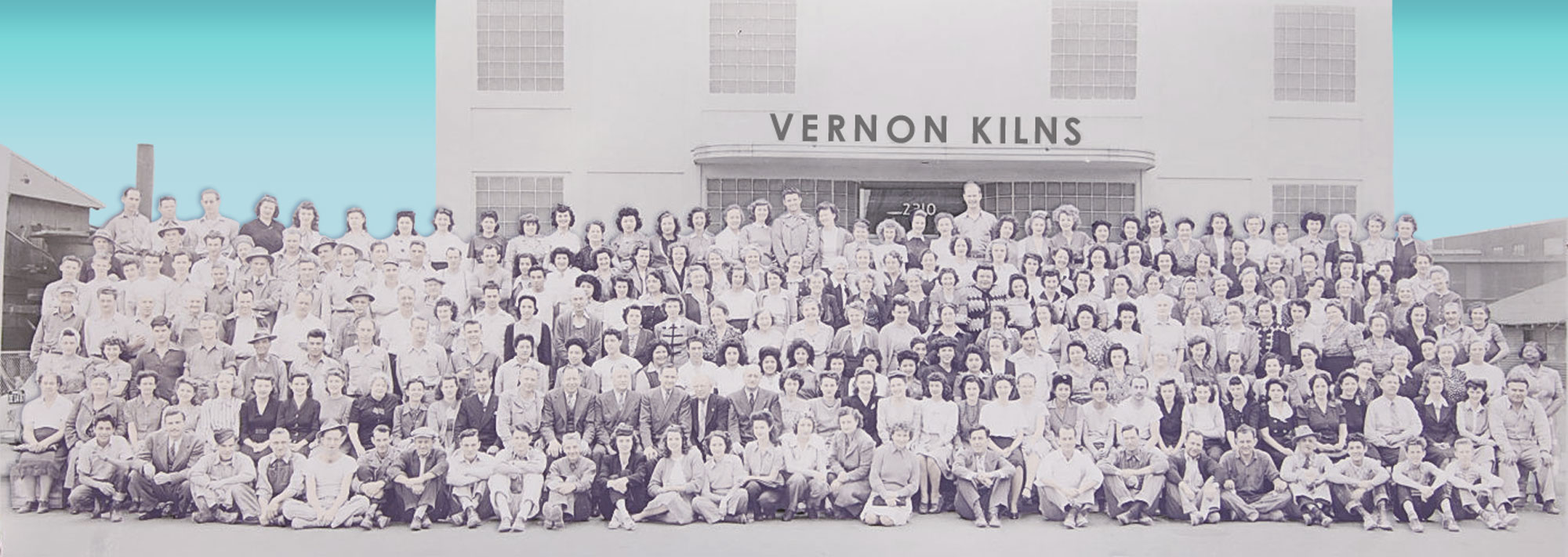
The new Vernon Kilns
Around this time Bennison and his contemporaries began to be influenced by the commercial application of the emerging art deco and streamline aesthetic. Bennison himself visited Europe for inspiration. The devastating 1933 Long Beach earthquake accelerated a design shift at the company. All of the remaining Poxon stock was destroyed. The damage to the plant’s beehive kilns and loss of stock prompted a complete redesign of the company’s dinnerware molds resulting in the new, modern, and enduring “Montecito” shape. Vernon introduced their first solid color dinnerware line “Early California” on Montecito.
In the mid-1930s, Vernon Kilns established a short-lived art division featuring the work of top designers like May and Vieve Hamilton, Harry Bird and Jane Bennison. Jane Bennison was the daughter of owner Faye Bennison, and in addition to her artware design work, she is also credited with the upside-down handles featured on the Ultra shape.
In 1936, Gale Turnbull joined as their art director and revitalized their dinnerware lines. The art division was officially closed around 1937, marking the end of some of these early collaborations, but Turnbull continued innovating in dinnerware with his own designs as well as bringing onboard illustrious talent like the illustrator and artist Rockwell Kent (Salamina, Our America, Moby Dick patterns) and artist-poet Don Blanding (Hawaiian floral patterns) in the 1940s.
Living on through Metlox
Unable to remain competitive in the post-World War II period due to the influx of cheap Japanese pottery and continued labor strikes, Vernon closed their doors and sold off their company assets in 1958. Many of the popular Vernonware lines lived on at Metlox, who purchased the molds and trademarks, continuing to manufacture many popular Vernon patterns (notably the “plaids” and many patterns on the San Clemente shape (Anytime, Heavenly Days, Tickled Pink, etc.) in their new Vernonware division.
Vernon Kilns 1930s colorware lines
Vernon Kilns’s first colorware offering was Early California. This popular line of brightly colored pottery was distributed nationally and remained in production from approximately 1935 through 1950. A spin-off of Early California, premium-ware called Coronado, was a fast follower. Around 1937, as color tastes changed towards pastels, they reglazed Early into a new line called Modern California (Montecito shape), featuring soft satin glazes. The pastel lines Ultra California (Ultra shape) and Native California (the Melinda shape designed by Royal Hickman, also of Garden City Pottery) launched in the late 1930s.
More on Vernon Kilns
Additional Resources
For more on Vernon Kilns, see Collectible Vernon Kilns by Maxine Feek Nelson.






